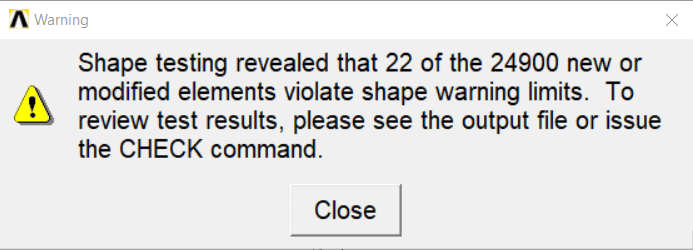cirokos
Civil/Environmental
- Apr 11, 2022
- 63
Hello everyone,
When I mesh my model this warning pops up about element shape. I tried to change the way of the mesh generation but it doesn't go away.
I want to run a non linear analysis and I think that this creates a problem for large deflection of the particular elements. How can I find a way to overcome this ?

When I mesh my model this warning pops up about element shape. I tried to change the way of the mesh generation but it doesn't go away.
I want to run a non linear analysis and I think that this creates a problem for large deflection of the particular elements. How can I find a way to overcome this ?

